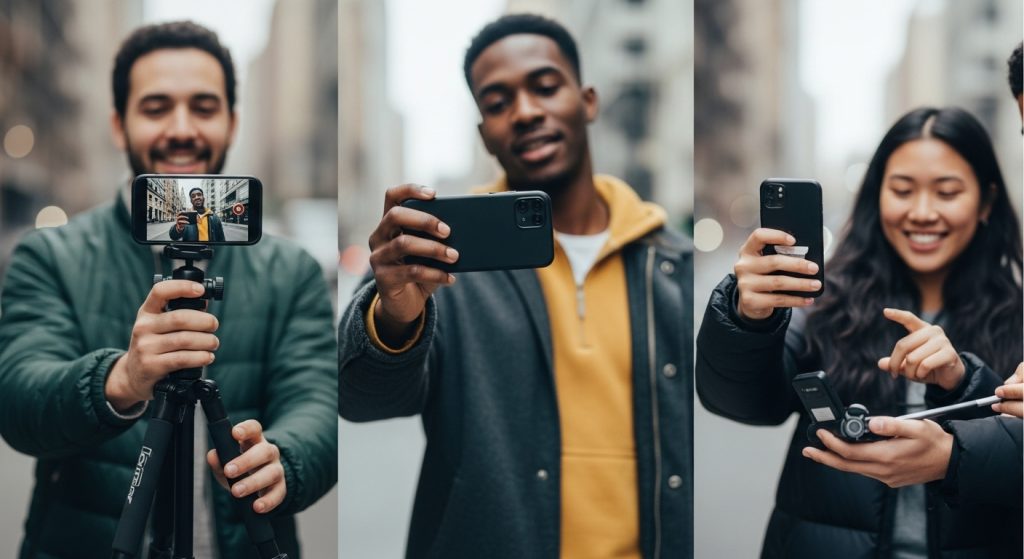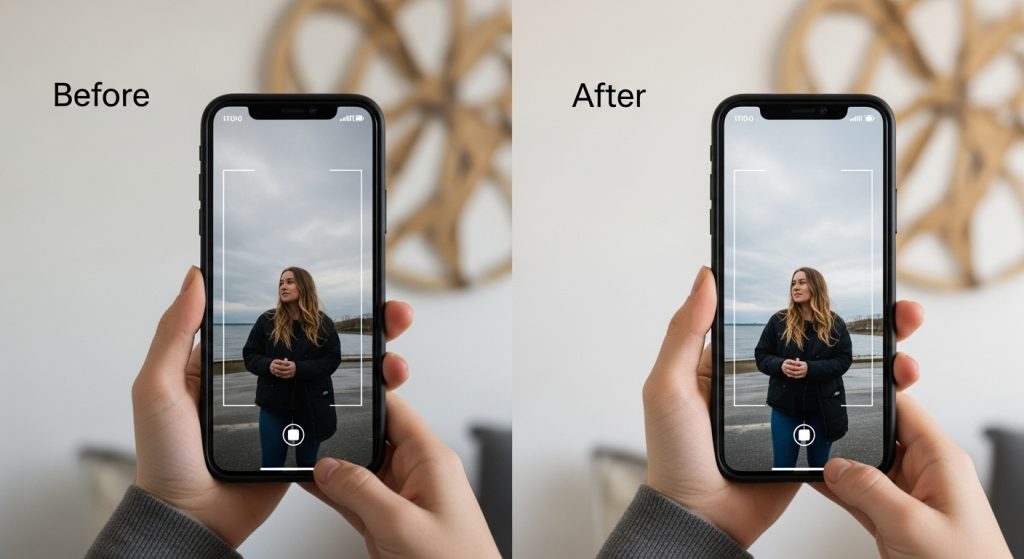
Introduction: The Dream, The Camera, and The Roadblocks
There’s a unique magic in visual storytelling. It’s the spark of an idea, the desire to capture a fleeting moment, or the urge to share a message that truly resonates. In today’s visually-driven world, video isn’t just a medium; it’s arguably the most powerful way to tell a story, to connect with an audience, and to leave a lasting impact. Consider the captivating vlogs that inspire millions, the compelling brand narratives that build loyalty, or the cherished personal memories preserved forever – this is the transformative power of videography.1
Yet, for many aspiring videographers, the journey often begins with a burst of enthusiasm that quickly encounters frustrating roadblocks. Imagine Sarah, a passionate beginner who, like countless others, invested in a camera brimming with dreams of creative expression. Soon, she found herself overwhelmed by the sheer complexity. She felt stumped by countless settings and intimidated by intricate editing software, quickly realizing she didn’t “fully understand her camera and editing program”.3 This lack of foundational knowledge meant missing out on “hidden gems” that could significantly enhance her work, leading to fumbling, frustration, and wasted creative time.3
Her camera, once a symbol of aspiration, began to gather dust. Sarah knew instinctively that “mastering photography or videography requires dedicated practice,” but finding the time and knowing what to film to gain “hands-on experience with composition, lighting, movement, frame rates” felt daunting. This struggle with consistent, purposeful practice is a common hurdle, often leading to a stagnation of skills and a decline in confidence.
Perhaps the most disheartening challenge for Sarah, and many like her, was the comparison trap. She would scroll through social media, seeing stunning footage from “friends or favorite YouTubers,” and feel “disheartened”.3 Doubts crept in, making her question if “perhaps this isn’t your forte or that you’re simply not cut out for the world of cameras”.3 This common stumbling block is more than just a minor frustration; it represents a significant psychological barrier that can lead to aspiring videographers abandoning their creative pursuits before they even truly begin. When individuals feel inadequate early on due to comparisons, they are less likely to continue practicing, which directly hinders skill development and investment in their craft. This cycle of self-doubt can be incredibly destructive to creative growth.Furthermore, Sarah worried about equipment. She felt she didn’t have the “right equipment” or the budget for it, understanding that “quality matters” and that “audio is arguably the most important”.4 She felt paralyzed by the sheer volume of gear choices and the fear of not producing “professionally produced videos”.5 These pain points are universal, but what if these challenges weren’t dead ends, but rather stepping stones? What if there was a clear, supportive path to navigate these hurdles, transform your passion into tangible skill, and even build a thriving online presence and diverse income streams? This is the promise of a structured learning journey, designed to turn common struggles into creative triumphs.
Chapter 1: Mastering Your Craft: Turning Challenges into Creative Triumphs

Sarah’s story took a turn when she discovered a resource that promised to demystify the technical jargon and build her confidence step-by-step. It wasn’t just about passive learning; it was about active doing.
Demystifying Your Gear & Software: From Fumbling to Fluent
A well-structured videography course breaks down complex camera settings and editing software into manageable, digestible lessons. It moves beyond merely knowing what a button does to understanding why and how to use it effectively. The emphasis is on “thoroughly research[ing] and familiariz[ing] yourself with your camera and editing software to unleash its full potential”.3 This practical application enables you to “feel more confident, minimize fumbling, and significantly boost your efficiency” by understanding its capabilities and shortcuts.3 Instead of being overwhelmed, you learn to harness your tools, transforming frustration into fluid creativity.
The Power of Consistent Practice: Embracing the Journey, Not Just the Destination
The path to mastery in any skill is paved with practice, and videography is no exception; “practice makes progress”.3 A comprehensive course provides structured exercises and prompts, encouraging consistent hands-on experience. It teaches you to view “mistakes…as stepping stones to improvement” rather than failures.3 The key is to integrate the camera into your daily life, “captur[ing] whatever is happening in your life” to gain practical experience with fundamental elements like “composition, lighting, movement, frame rates”.3 This iterative process, guided by expert instruction, builds muscle memory and intuitive understanding, accelerating your growth.
Overcoming the Comparison Trap: Cultivating Your Unique Visual Voice
The struggle with comparing one’s work to that of others is universal; “Every person you admire…has encountered similar moments of doubt and frustration”.3 The right guidance helps you shift your focus from debilitating comparison to celebrating personal growth and perseverance. It fosters a mindset where setbacks become opportunities for learning, and the understanding that everyone “has to start somewhere” 3 becomes a source of encouragement, not discouragement. By focusing on your own progress and developing your unique style, you cultivate a visual voice that is authentically yours, free from the shadow of others’ achievements. This shift in perspective is crucial for sustained engagement and long-term success in any creative field.
Beyond the Basics: Essential Skills for Professional-Grade Video
A truly comprehensive course covers critical elements often overlooked by beginners, such as mastering sound and lighting. These aspects are “very important to shooting” and are crucial for creating “professionally produced videos”. Even with basic equipment, understanding these foundational principles can dramatically elevate your work, ensuring that “if they can still hear you they can understand the information you’re giving”. This highlights a vital point: while visual perfection is often sought, clear and professional audio is frequently more critical for conveying a message effectively, especially in the early stages of a videographer’s journey. Mastering these fundamentals provides a solid base upon which all other creative endeavors can build.
To summarize the common challenges and how a structured learning path addresses them, consider the following:
| Common Videography Hurdle | How a Comprehensive Course Helps |
| Not understanding camera/editing software | Provides step-by-step guides to master gear settings and software features, boosting efficiency and confidence. |
| Neglecting consistent practice | Offers structured exercises and prompts for consistent hands-on experience, turning mistakes into learning opportunities. |
| Feeling disheartened by comparisons | Fosters mindset shifts and provides community support to overcome self-doubt and cultivate a unique visual voice. |
| Lack of ideal shooting environment/equipment limitations | Teaches techniques for optimizing any shooting location and provides strategies for maximizing existing gear and smart investment advice. |
Chapter 2: Your Story, Your Brand: How Videography Elevates Your Presence

The journey from technical mastery extends into the realm of personal and professional presence. Consider Alex, a small business owner who, despite having a great product, struggled to stand out online. He realized that static content wasn’t cutting it; professional video was the undeniable key to connecting with his audience and building a memorable brand.
The Visual Language of Personal Branding: More Than Just a Logo
In today’s dynamic digital landscape, everyone possesses a personal brand, whether actively cultivated or not.1 Video emerges as the “ultimate tool for enhancing your personal branding efforts and expanding your online presence”.1 It transcends mere words, becoming a visual language that communicates your essence. Video allows you to create a “concise visual representation that encapsulates your personal brand’s essence,” making you instantly recognizable and fostering trust.1 This visual identity is paramount for cutting through the digital noise and establishing a distinct presence.
Crafting a Strong First Impression and Deeper Connection
Professional video editing is paramount for creating a “strong first impression” and significantly “improves storytelling and engagement”.2 Through video, you can effectively “communicate your message, showcase your values, and allow your audience to connect with you on a deeper level”.1 This profound connection is built not just through spoken words, but through the “seamless sequencing and careful pacing” and the “emotional connection with music and sound effects” that professional editing enables.2
There is an interesting dynamic at play here, often described as the “authenticity paradox” in digital branding. While modern audiences genuinely crave authenticity and a personal connection, they also hold increasingly high expectations for production quality. Raw, unedited, or poorly produced footage, while perhaps feeling “authentic,” can inadvertently deter viewers if the audio is poor, the visuals are jarring, or the narrative is unclear. This is implied by the benefits of professional editing 2 and the importance of good audio.4 The true challenge for creators is to achieve a professional polish
without losing the genuine, relatable feel that makes a personal brand resonate. Therefore, learning videography skills means understanding how to bridge the gap between raw content and impactful brand communication, ensuring that an authentic message is truly heard, seen, and felt, thereby building stronger trust and recognition.
Consistency is Key: Strengthening Brand Identity and Recognition
Mastering videography skills empowers you to maintain “brand uniformity in editing” 1 and consistently incorporate “brand elements like logos, color schemes, fonts, and taglines consistently across your videos”.2 This disciplined approach across all your content “strengthens your brand identity and increases brand recognition” 2, making your presence cohesive, professional, and instantly identifiable. Consistent visual branding reinforces your message and fosters a sense of reliability with your audience.
Optimizing for Impact: Maximizing Reach and Shareability
Professional videography extends beyond mere filming and editing to optimizing videos for different platforms.2 This includes adding “engaging captions and subtitles” for accessibility and silent viewing, and creating “attention-grabbing thumbnails” that entice clicks.2 The evidence suggests that “high-quality, well-edited videos are more likely to be shared by viewers” 2, leading to increased “reach and brand visibility organically” as your compelling content spreads across social media. This strategic optimization ensures that your brand message not only looks professional but also performs effectively in the crowded digital landscape.
Chapter 3: From Passion to Profit: Monetizing Your Videography Skills

Initially, Maya loved videography as a hobby. However, she soon recognized the immense value of her developing skills. With the right guidance, she learned how to transform her creative passion into a sustainable income, diversifying her revenue streams far beyond what she initially imagined.
Beyond Ads: Diverse Monetization Avenues for Videographers
Making money from video content extends far beyond simply relying on YouTube ads. There are “7 practical ways to monetize videos without ads (and actually make more)” 6, along with numerous other options that offer greater stability and creative freedom.7 Your videography skills are a valuable asset with multiple pathways to generate income, allowing for a robust and resilient financial model.
Freelance Videography: Direct Client Work and Project-Based Income
A foundational path for videographers is offering services directly to clients. This can encompass a wide range of projects, including filming corporate videos, marketing campaigns, educational materials, special events (such as weddings), music videos, product demonstrations, and documentaries.8 Building a strong portfolio is paramount for attracting clients, and this can be initiated by taking on practice projects for friends or local businesses.9 The professional process involves clearly defining the project, writing precise job descriptions, reviewing portfolios, and collaborating closely on the client’s vision to ensure alignment and successful delivery.10
Creating Your Own Digital Products & Courses: Becoming an Educator and Expert
Videographers can leverage their expertise to “create and sell courses” 6 or “build a membership” 6 for consistent, recurring income. This model offers “consistent recurring income, deeper audience connection, and long-term creative freedom” 6, allowing you to teach others what you’ve mastered and cultivate a loyal community around your knowledge. This approach transforms your skills into scalable intellectual property.
Affiliate Marketing & Brand Sponsorships: Leveraging Your Influence
Another powerful avenue involves engaging in affiliate marketing, where you promote a product or service with a unique tracking link, earning a commission when a purchase is made through it.6 Additionally, exploring sponsorships involves “brands pay[ing] the creator a fee in return for creating content to promote the brand or products”.7 This can be a “lucrative option” 7, particularly for creators who have cultivated loyal, niche audiences.
Coaching, Consulting, and Live Events: Personalized Expertise and Community
Skilled videographers can also “offer coaching or consulting” to individuals or businesses seeking personalized guidance.6 Furthermore, “host[ing] paid live events,” workshops, or retreats allows for “immediacy and interactivity” 6, building deeper connections with your audience and offering unique, high-value experiences. These direct engagement models foster strong relationships and provide significant earning potential.
Building a Business Foundation: From Hobbyist to Entrepreneur
Underpinning all monetization strategies are essential entrepreneurial aspects. This includes formally making your business official by choosing a legal entity, setting up proper finances and accounting, and cultivating a proactive marketing mindset.11 Having a professional “online experience” through a website that effectively addresses client “pain points” and showcases testimonials is crucial for attracting steady work and building credibility.11 These foundational business practices transform a hobby into a sustainable and profitable venture.
The journey of skill mastery, personal brand growth, and monetization are not isolated endeavors; they form a synergistic, self-reinforcing loop. Mastery of videography skills leads to the production of high-quality video content. This high-quality content is essential for building a strong, professional, and authentic personal brand. A strong, recognized personal brand, in turn, attracts opportunities for diverse monetization, whether through direct client work, sponsorships, or selling one’s own products and courses. The quality of your output directly impacts your credibility and earning potential across all these avenues. This holistic progression indicates that a comprehensive learning program offers not just a technical skill, but a complete ecosystem for digital empowerment and entrepreneurial success. It’s not merely about “how to shoot a video,” but “how to shoot a video that builds your brand and generates income,” providing a powerful differentiator and appealing to those seeking comprehensive life and career transformation.
To illustrate the diverse income opportunities available to skilled videographers, consider the following table:
| Monetization Strategy | Description | Ease of Implementation | Earning Potential |
| Freelance Client Work | Producing videos for businesses, events, or individuals on a project basis (e.g., corporate videos, weddings, marketing content). | Medium | High |
| Selling Online Courses/Memberships | Creating and selling educational video content or offering exclusive access to a community for a recurring fee. | Medium to Hard | High |
| Affiliate Marketing | Promoting products/services with a unique tracking link and earning a commission on sales generated through it. | Easy | Medium |
| Brand Sponsorships | Collaborating with brands to promote their products/services in your video content in exchange for a fee. | Medium | High |
| Coaching/Consulting | Offering personalized guidance or strategic advice on videography and video content creation to individuals or businesses. | Easy | High |
| Selling Branded Merch/Digital Products | Creating and selling physical merchandise (e.g., t-shirts) or digital assets (e.g., presets, templates) related to your brand. | Medium | Medium |
Conclusion: Your Visual Legacy Starts Now

The journeys of Sarah, Alex, and Maya vividly illustrate the transformative path available to aspiring videographers. From grappling with technical confusion and self-doubt, they evolved into empowered, confident, and creatively fulfilled individuals who successfully monetized their skills. Their stories underscore that the path to creative mastery, a strong personal brand, and diverse income streams is not merely a distant dream, but an achievable reality.
Your unique story, your powerful brand, and your potential for financial freedom are waiting to be filmed. The only thing standing between you and your visual legacy is the decisive step to begin. If you are ready to transform your videography journey from a frustrating hobby into a fulfilling passion and a profitable venture, a comprehensive course offers the essential next step. It provides a proven roadmap designed to equip you with the skills, confidence, and strategies needed to create stunning visuals, build impactful brands, and unlock diverse income streams. Your visual legacy starts now.
[Link to Learn with Kayo Course]
Hi, this is a comment.
To get started with moderating, editing, and deleting comments, please visit the Comments screen in the dashboard.
Commenter avatars come from Gravatar.